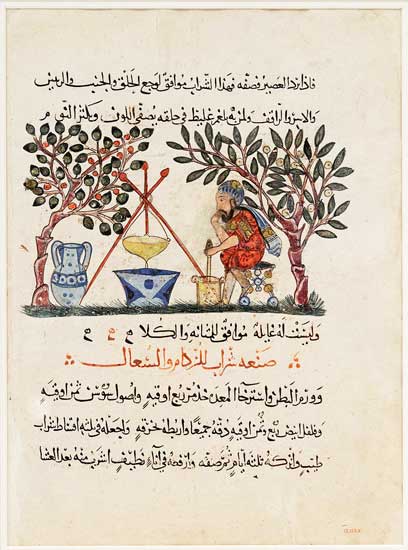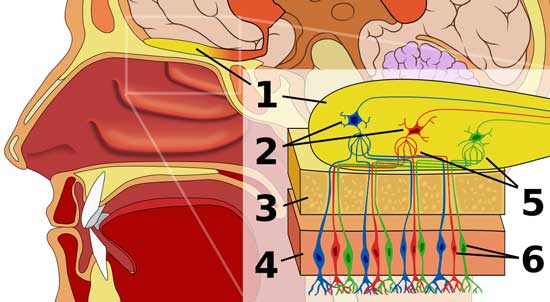published: 2-12-2018
What are essential oils and why is everyone talking about them?
Essential oils are fragrant and aromatic oils that are naturally produced by plants. Thanks to the chemical shape of these oils, they are volatile. This means the oils can escape from the plant, float through the air and waft into our nose.
If you’re driving down a country road in the springtime and the scent of wildflowers drifts through your window…you’re now smelling the plant’s essential oils.
Essential oils have been enjoying a resurgence in popularity. They’re popping up everywhere.
For me . . . its personal . . . my girlfriend has committed our main bathroom cabinet to these tiny bottles of oil.
So, why is everyone so excited about these oils?
Great question…let me explain.
As a biologist, I’ll do my best to remove the hype and focus on the real value of these oils.
Essential oils are being used for the following 3 applications.
- aromatherapy
- pharmacology
- household cleaning
Below, I’ll discuss all 3 applications and recommend the best essential oils for each category.
On a separate page, I describe my daily superfood drink. I combine a superfood plant powder with a plant fiber supplement. It’s delicious and curbs my appetite.

My girlfriend keeps our bathroom cabinet filled with many small bottles of essential oil.
Are these oils really essential?
The word essential is a bit misleading. These oils are not essential in the sense that we would die without them. In fact, no one has ever died from not using essential oils. These oils are essential because they contain the essence of the plant. A plant’s fragrance, also defined as essence, is captured within these oils.
Aromatherapy
As mentioned above, these essential oils smell wonderful. Adding a drop to the back of your neck or diffusing the oils throughout your home is simply pleasant. You don’t need to be a scientist to understand this…
Aromatherapy is formally defined as the use of essential oils for the sake of improving your physical, emotional and spiritual well-being.
I think it is best to describe aromatherapy as a form of complimentary medicine.
This means, aromatherapy can compliment more traditional forms of therapy. For example, if you’re dealing with cancer. You would never want to rely on aromatherapy to shrink your tumors and take you into remission. However, if you’re undergoing multiple rounds of chemotherapy and radiation, then aromatherapy would be an excellent strategy to help calm your nerves and relax your body.
History of essential oils and aromatherapy
Rene Gattefosse, a French chemist, first coined the term aromatherapy in 1937 as he was studying the effects of essential oils on disease.
It should be noted, however, that the use of essential oils has been a part of human civilization for thousands of years.
In fact, Dioscorides, the ancient Greek physician, chronicled the medical use of plant oils in his seminal book, De Materia Medica. Dioscorides collected botanical information for this book between 50 and 70 AD, while he was serving as a physician for the Roman Army.
Dioscorides divided the book into 5 volumes. He dedicated the first volume to Aromatics. Dioscorides discusses the preparations and medical application of many essential oils including: cardamom, cinnamon, hops, pine resin, apple, peach, lemon, plum, senna and valerian.
The field of essential oils advanced significantly in the 13th century, thanks in large part to an Islamic physician named Ibn al-Bayṭār.
Ibn al-Bayṭār was an Arab from Andalusia, the Muslim controlled region of Spain. Ibn studied botany, chemistry, medicine and traveled throughout Europe, Asia and Africa collecting plants and documenting their medicinal usage.
Ibn al-Bayṭār wrote a highly influential pharmaceutical encyclopedia called, Compendium on Simple Medicaments and Foods.
In this text, he describes 1400 plants, foods and essential oils. At 900 pages, the Compendium picks up where De Materia Medica left off. Among other things, Ibn al-Bayṭār describes how rose oil is prepared using hot oils and fats, then cooled down with cinnamon oil. He also details the process of steam distillation, a technique still in use today by practitioners of essential oils and perfumes.
Ibn al-Bayṭār died in Damascus in 1248.

Dioscorides first published De Materia Medica in 70 AD. During the middle ages, many classic Greek and Roman texts were preserved by Arabic book scribes. This illustrated page is from an Arabic version of De Materia Medica (1224 AD).
The image depicts a man preparing essential oils from tree fruit.

photo: Keke999, via Wikimedia Commons
Sculpture of Ibn al-Bayṭār in Málaga, Spain.
The central premise in aromatherapy is that a scent can affect our physiology and/or our emotional state.
Is that possible?
How can a scent affect our mood and emotion?
We know that aromatic chemicals (such as essential oils) can float through the air and land on specific odor receptors in our nose. These odor receptors are proteins that sit on the surface of the sensory neurons in our nose. The sensory neurons in our nose are called olfactory neurons and the fancy name for smelling is olfaction.
So, in summary… volatile chemicals in essential oils land and activate odor receptor proteins on the the surface of our olfactory neurons. In doing so, the olfactory neuron becomes activated.
Once activated, our olfactory neurons initiate a circuit in our brain’s limbic system.
The limbic system is the portion of our brain that controls our mood and emotions.
In this sense, it is absolutely possible for a scent to instigate a mood or emotional state.
Interestingly, our sense of smell (olfaction) has a very direct anatomical connection to our limbic system. Other senses, like taste and hearing, have much less direct connections to our brains (see figure). This explains why specific smells can trigger deep memories and evoke emotional states more intensely than food or sound.

photo: Chabacano, CC BY-SA 2.5, via Wikimedia Commons
The olfactory neurons (6) receive the scent of essential oils with their odor receptor proteins. Once activated, these olfactory neurons send a signal to the olfactory bulb (1). This bulb directly connects to our brain (as seen in upper left corner).
Below, I mention some of the more popular essential oils used for aromatherapy.
- sandalwood (energy, vitality)
- frankincense (uplifting)
- lavender (relaxation, mood)
- orange (calm spirit, positive mindset)
- neroli (body care)
- rosemary (invigorate mind)
- lemongrass (balancing)
- peppermint (clarity, focus)
- wild orange (mood)
- ginger (digestion)
- bergamot (body care)
- eucalyptus (refreshing)
- cedarwood (relieve tension)
Keep in mind, each individual reacts differently to these oils. Some people report no effect and some people become lifelong fans of aromatherapy.
Pharmacology
Pharmacology is the study of the relationship between humans and therapeutic drugs. To describe an essential oil as a therapeutic drug is a very big claim. In fact, it is technically a false claim because a therapy must be approved by the FDA before its called a drug.
We’re still in the early days of exploring the healing capacity of essential oils. We really need to see more results from human clinical studies before its appropriate to talk about oils in the context of preventing or curing disease.
That said, some laboratory and small clinical studies have been performed on certain oils. The results from these experiments are certainly intriguing. Tea tree oil is an example of a well-studied essential oil.
Tea tree is a shrubby tree (Melaleuca alternifolia), which is native to Australia and New Zealand. An essential oil is distilled from this plant to create tea tree oil. Laboratory tests reveal that tea tree oil can kill off many different species of bacteria and fungus. These results dictate that tea tree oil has anti-microbial and anti-fungal properties.
Further tests show that the specific anti-microbial chemical in the tea tree oil is Terpinen-4-ol.
A human clinical study has been performed with tea tree oil. Scientists designed experiments to determine whether tea tree oil could eliminate a type of athlete’s foot that is caused by toe-nail fungus. The results demonstrate that tea tree oil could effectively eliminate this foot fungus just as well as the standard chemical treamtent.
Below, I mention the best essential oils for anti-microbial activity.
In parentheses, I include references for the scientific literature that explores the anti-microbial (anti-bacterial or anti-fungal) properties of each oil. Keep in mind, much of this testing has only been performed in laboratories within petri dishes. Further human clinical trials are necessary before these oils could be considered a reasonable substitute for traditional anti-bacterial therapy (i.e. antibiotics).
Household cleaning
Household cleaning is a drudge. Nobody likes it.
That said, this mundane work can be improved with a few drops of essential oils. I can confidently make this claim without fear of retribution from the FDA. Fortunately, the FDA is not cracking down on all-natural kitchen counter cleaners!
In all seriousness, my girlfriend has recently thrown out our supermarket brand All-Purpose Cleaner. I think it was Simple Green that landed in the trash. We now use a blend of essential oils to do the same job. I was skeptical at first, but I’m a recent convert. Her all-purpose cleaner is made from essential oils and it does seem to get the job done.
As discussed above in the Pharmacology section, many essential oils demonstrate the ability to kill bacteria and fungus in laboratory experiments. Therefore, it only makes sense that one could use certain oils to concoct a potent household cleaner that smells great and eliminates mold and soap scum.
One of the classic, essential oil cleaner blends is created by adding 2-3 drops of lemon oil and 2-3 drops of tea tree oil to 2-3 ounces of warm water. Load this mix in a spray bottle and start disinfecting counter-tops. To clean your bath-tub and battle shower curtain scum, try adding a few drops of eucalyptus oil to that lemon and tea tree blend.
Below, I mention some of the commonly used essential oils used for household cleaning.
- tea tree
- cinnamon
- eucalyptus
- citrus (orange, grapefruit, lemon, ext.)
- clove
- rosemary
- pine
- spearmint
- lemongrass
One last thing…
As a scientist, I would be remiss if I didn’t address the biological significance of essential oils.
Why does a plant invest the energy to produce these fragrant oils?
A lavender plant doesn’t care about the calming properties of your latest aromatherapy treatment. So, why does it commit valuable resources towards synthesizing fragrant oils.
Here’s the short answer…These oils provide a benefit to the plant.
Life is a struggle. It’s a struggle for humans and its a struggle for plants. When life challenges us, we get moving and resolve the issue. Humans are blessed with legs and muscles and a skeletal system. We walk around and carry things from A to B.
When we want shelter, we can drive to the hardware store and buy housing materials. If a criminal with a knife approaches, we can run away from that predator. When friends are cooking a delicious dinner, we head over to their house and eat their food. Simple.
Plants don’t have these options because they are stationary.
Plants are rooted in place, literally.
When a plant needs to defend against a predator or shield itself from an extreme sun…the plant is forced to remains right where it was born. Relocation is not an option.
Plants must rely on their internal biochemistry to save the day.
This is why plants are such a treasure trove of bioactive chemicals!
Throughout their evolutionary history, plants have been forced to innovate and design new chemical structures to assist them in their struggle for survival.
Plants produce aromatic oils to:
- coat their leaves and prevent over-drying
- produce a leaf that is toxic to insects that want to eat the leaf
- attract pollinators to assist in plant sex
When we smell plants, we are sampling their complex library of survival strategy chemicals.
Sometimes, these survival strategy chemicals will also produce a physiological effect in the mammals that eat or smell the plants.
Anyone that enjoys a cup of coffee knows that plant compounds can definitely engage mammalian physiology.
(The caffeine molecule in coffee beans interacts with the adenosine signal in human brains to reduce our sleepiness.)
Essential oils are no different; they are strategic plant chemicals that engage our olfactory neurons and trigger circuits in the human brain…
Pretty cool eh?
While researching this article, I’ve come across a lot of great people that are passionate about plants and essential oils. Emma Carter is one of these people. She has written an incredibly informative article about the process of becoming oriented to the universe of essential oils. If you’re looking for more information, please do check out Emma’s educational oils page.
References
Abbaszadegan, A., et al. “Antimicrobial and Cytotoxic Activity of Cinnamomum zeylanicum, Calcium Hydroxide, and Triple Antibiotic Paste as Root Canal Dressing Materials.” The journal of contemporary dental practice 17.2 (2016): 105-113.
Bagchi, Biswajoy, et al. “Synthesis of eucalyptus/tea tree oil absorbed biphasic calcium phosphate–PVDF polymer nanocomposite films: a surface active antimicrobial system for biomedical application.” Physical Chemistry Chemical Physics18.25 (2016): 16775-16785.
Brady, Aaron, et al. “In vitro activity of tea-tree oil against clinical skin isolates of meticillin-resistant and-sensitive Staphylococcus aureus and coagulase-negative staphylococci growing planktonically and as biofilms.” Journal of medical microbiology 55.10 (2006): 1375-1380.
Carmo ES, Pereira Fde O, Cavalcante NM, et al. Treatment of pityriasis versicolor with topical application of essential oil of Cymbopogon citratus (DC) Stapf – therapeutic pilot study. An Bras Dermatol. May-Jun 2013;88(3):381-385.
Carson, C. F., K. A. Hammer, and T. V. Riley. “Melaleuca alternifolia (tea tree) oil: a review of antimicrobial and other medicinal properties.” Clinical microbiology reviews 19.1 (2006): 50-62.
Ledoux, J., (2003). Synaptic Self. New York: Penguin Books. 0142001783
May, J., et al. “Time–kill studies of tea tree oils on clinical isolates.” Journal of Antimicrobial Chemotherapy 45.5 (2000): 639-643.
Saad, Bashar; Said, Omar (2011). “3.3”. Greco-Arab and Islamic Herbal Medicine. West Sussex, England: John Wiley & Sons.
Warnke, Patrick H., et al. “The battle against multi-resistant strains: renaissance of antimicrobial essential oils as a promising force to fight hospital-acquired infections.” Journal of cranio-maxillo-facial surgery 37.7 (2009): 392-397.
